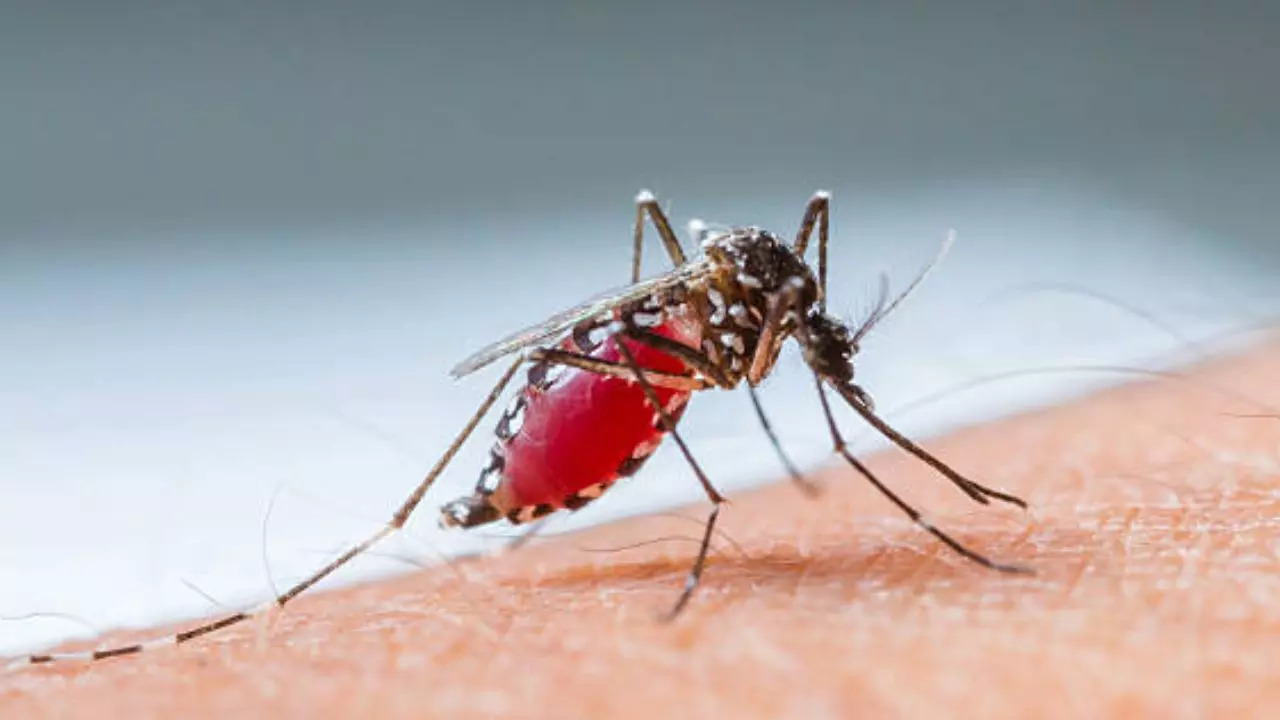Dengue alert: Panchkula reports 503 cases, Chandigarh 25 – Symptoms to look out for (Image credit: iStock)
The tri-city region comprising Panchkula, Mohali and Chandigarh is witnessing a marked increase in dengue cases. As of September 21, Panchkula tops the tally with a staggering 503 cases, followed by Mohali with 194 cases, while Chandigarh has reported 25 cases. Health authorities are urging residents to take necessary precautions as dengue cases usually peak during this time of the year, especially after the rains.
According to health experts, dengue cases are increasing rapidly and people should consult a doctor immediately if they experience high fever, body aches or skin rashes. Early diagnosis can prevent the disease from progressing to more severe stages,” he said.
Dengue cases on the rise in Panchkula and Mohali
The worst-affected region in the area, Panchkula, has been the worst hit, with 503 cases reported. In response, health officials are rapidly scaling up efforts to control the outbreak. Dr Suman Singh, director of health services in Chandigarh, shared her insights into the nature of this year’s outbreak, explaining that different strains of the dengue virus are circulating, contributing to the varying severity of cases. “We are witnessing a mix of dengue virus strains this year, which is complicating the situation. Some strains cause mild symptoms, while others can be life-threatening if not treated promptly,” she said.
In Mohali, where 194 positive cases have been recorded out of 3,339 people tested this year, authorities are also stepping up efforts to contain the spread. Despite these efforts, rising numbers indicate the need for increased vigilance among the population. The Mohali health department is actively urging residents to eliminate mosquito breeding grounds in and around their homes to prevent the situation from worsening.
Types of dengue
Dengue fever is caused by the dengue virus, which is transmitted through the bite of infected Aedes mosquitoes, particularly the Aedes aegypti species. There are four different strains or serotypes of the dengue virus and a person can be infected with all four during their lifetime.
1. Classic dengue: Classic or uncomplicated dengue is the most common form of the disease. Symptoms usually appear 4 to 10 days after the bite of an infected mosquito. Typical symptoms include:
– Sudden onset of high fever.
– Severe headaches
– Pain behind the eyes
– Pain in the joints and muscles (often called “breakbone fever”)
– Skin rashes
– Nausea and vomiting
This form of dengue usually resolves spontaneously and lasts between 7 and 10 days. However, it can cause significant discomfort and fatigue that can last for weeks.
2. Dengue hemorrhagic fever (DHF): Dengue hemorrhagic fever is a more severe form and can cause bleeding, loss of blood plasma, and low platelet counts (thrombocytopenia). Symptoms include those seen in classic dengue, but with additional signs of severe illness, such as:
– Bleeding gums or nose
– Blood in vomit or stool
– Severe abdominal pain
– Persistent vomiting
– Difficulty breathing
DHF requires immediate medical attention and hospitalization, as it can lead to shock or organ failure if left untreated.
3. Dengue shock syndrome (DSS): The most severe form of dengue, dengue shock syndrome, can be fatal if not treated promptly. In addition to the symptoms of dengue hemorrhagic fever, dengue shock syndrome includes:
– Severe drop in blood pressure
– Rapid and weak pulse
– Cold and clammy skin
– Concern
Down syndrome is potentially life-threatening and requires emergency medical intervention. Patients with Down syndrome often require fluid replacement and close monitoring in an intensive care facility.
Symptoms and early detection of dengue fever
Dengue symptoms can vary depending on the severity of the infection and the individual’s immune response. However, early detection is key to preventing complications. The most common signs of dengue include:
– Sudden high fever
– Severe headaches and muscle pain.
– Pain behind the eyes
– Nausea, vomiting and fatigue.
– Rashes that appear between 2 and 5 days after the onset of fever.
– Mild bleeding (such as bleeding from the nose or gums)
Health experts urge the public that anyone experiencing a combination of these symptoms, particularly during or after the monsoon season, should seek medical attention immediately. Delaying treatment can lead to serious complications, such as dengue hemorrhagic fever or dengue shock syndrome.
Prevention and control of dengue fever
Dengue prevention primarily involves controlling the mosquito population and minimizing exposure to mosquito bites. Aedes mosquitoes, which carry the dengue virus, breed in stagnant water, so it is essential to eliminate water accumulation in and around homes. Residents are advised to:
– Periodically check and drain standing water from containers, pots, buckets and tires.
– Use mosquito repellents and wear long-sleeved clothing, especially during dawn and dusk, when Aedes mosquitoes are most active.
– Install mosquito screens on windows and use mosquito nets to minimize the risk of bites.
– Participate in community mosquito control efforts, such as spraying campaigns and awareness programs conducted by health authorities.
Disclaimer:
The information contained in this post is for general information purposes only. We make no representations or warranties of any kind, express or implied, about the completeness, accuracy, reliability, suitability or availability with respect to the website or the information, products, services, or related graphics contained on the post for any purpose.
We respect the intellectual property rights of content creators. If you are the owner of any material featured on our website and have concerns about its use, please contact us. We are committed to addressing any copyright issues promptly and will remove any material within 2 days of receiving a request from the rightful owner.

